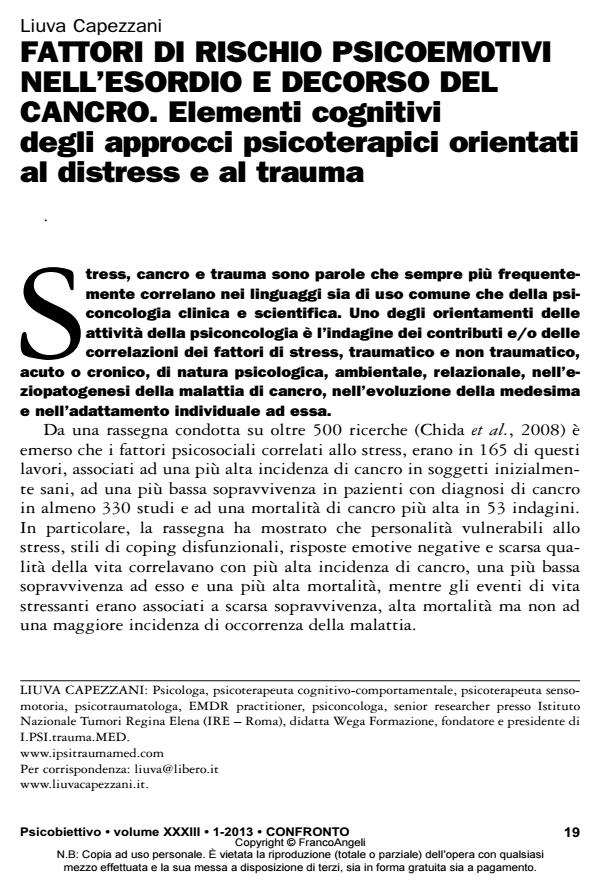Fattori di rischio psicoemotivi nell’esordio e decorso del cancro. Elementi cognitivi degli approcci psicoterapici orientati al distress e al trauma
Titolo Rivista PSICOBIETTIVO
Autori/Curatori Liuva Capezzani
Anno di pubblicazione 2013 Fascicolo 2013/1
Lingua Italiano Numero pagine 16 P. 19-34 Dimensione file 172 KB
DOI 10.3280/PSOB2013-001003
Il DOI è il codice a barre della proprietà intellettuale: per saperne di più
clicca qui
Qui sotto puoi vedere in anteprima la prima pagina di questo articolo.
Se questo articolo ti interessa, lo puoi acquistare (e scaricare in formato pdf) seguendo le facili indicazioni per acquistare il download credit. Acquista Download Credits per scaricare questo Articolo in formato PDF

FrancoAngeli è membro della Publishers International Linking Association, Inc (PILA)associazione indipendente e non profit per facilitare (attraverso i servizi tecnologici implementati da CrossRef.org) l’accesso degli studiosi ai contenuti digitali nelle pubblicazioni professionali e scientifiche
L’autore presenta alcuni dei fattori di rischio psicoemotivi che, secondo la letteratura analizzata, concorrono all’esordio ed evoluzione del cancro e della qualità di vita postuma ad esso. Esamina poi alcune criticità della comunicazione della diagnosi che contribuiscono alla formazione del distress non traumatico e traumatico nelle fasi di ospedalizzazione e di follow-up. Infine descrive un modello di intervento differenziato per le fasi citate, che tiene conto degli elementi cognitivi della psicoterapia cognitivo-comportamentale standard e di terza generazione, della psicoterapia sensomotoria e dell’EMDR.
Parole chiave:Distress; trauma; cancro; psicoterapia cognitivo-comportamentale; psicoterapia sensomotoria; EMDR
Liuva Capezzani, Fattori di rischio psicoemotivi nell’esordio e decorso del cancro. Elementi cognitivi degli approcci psicoterapici orientati al distress e al trauma in "PSICOBIETTIVO" 1/2013, pp 19-34, DOI: 10.3280/PSOB2013-001003